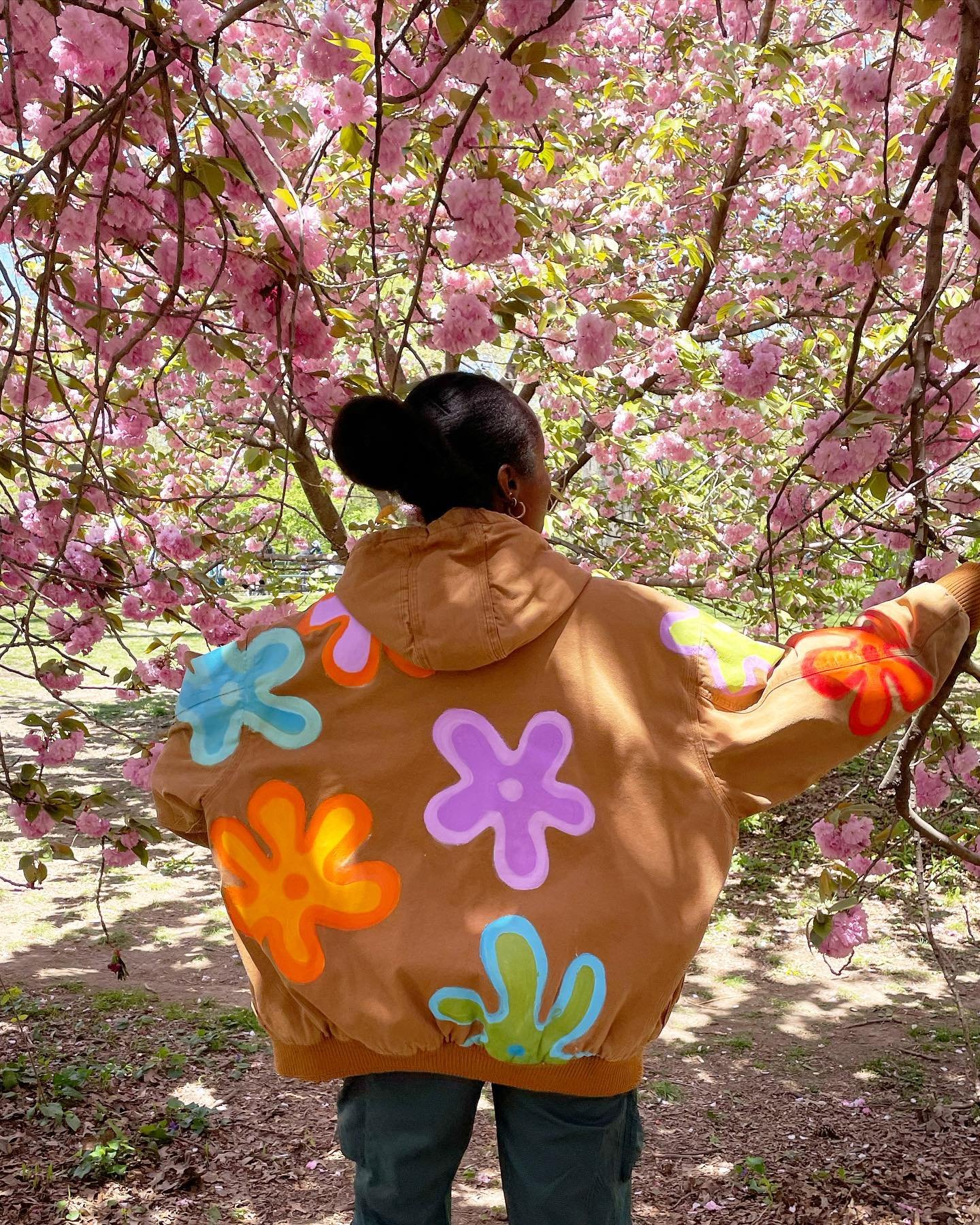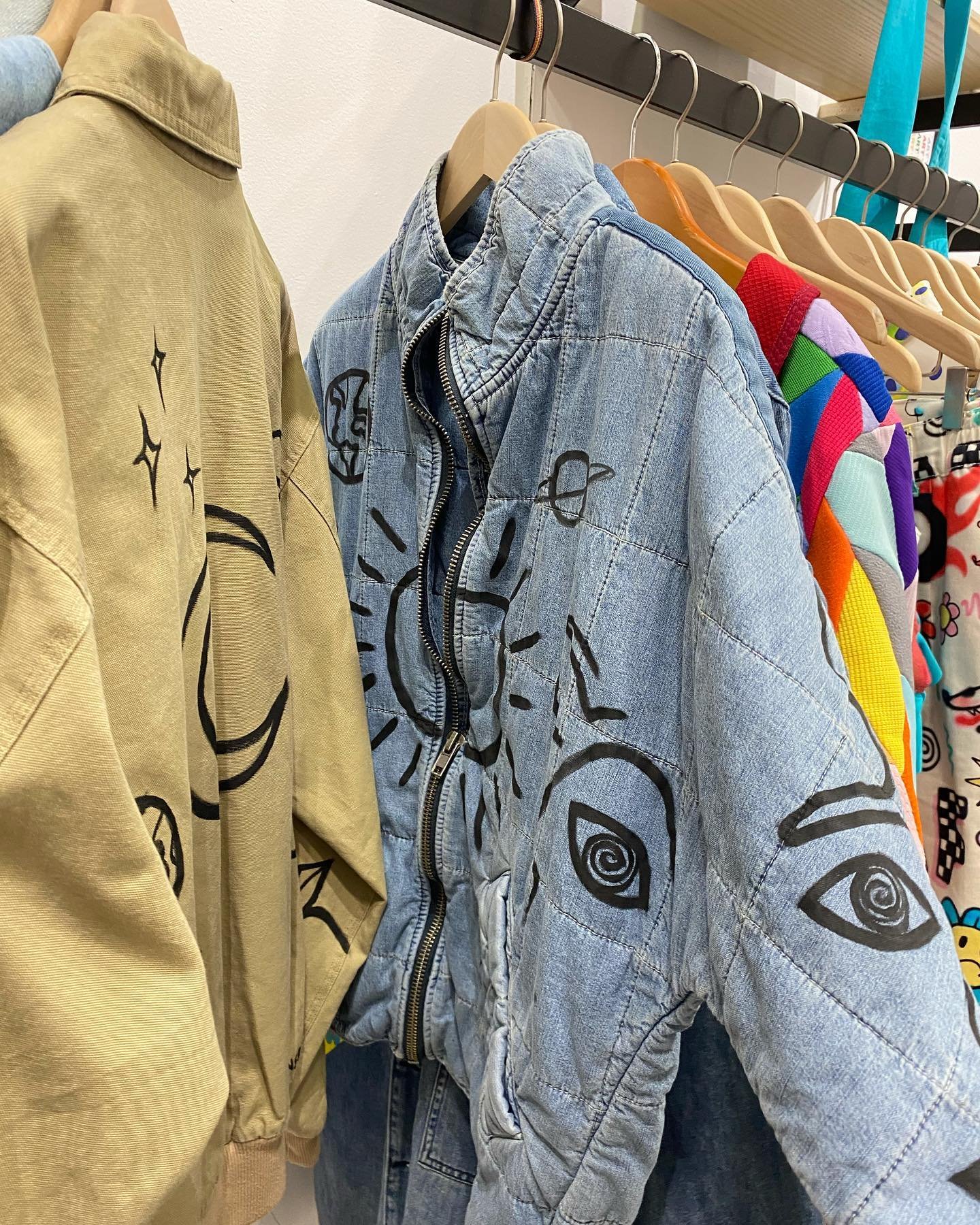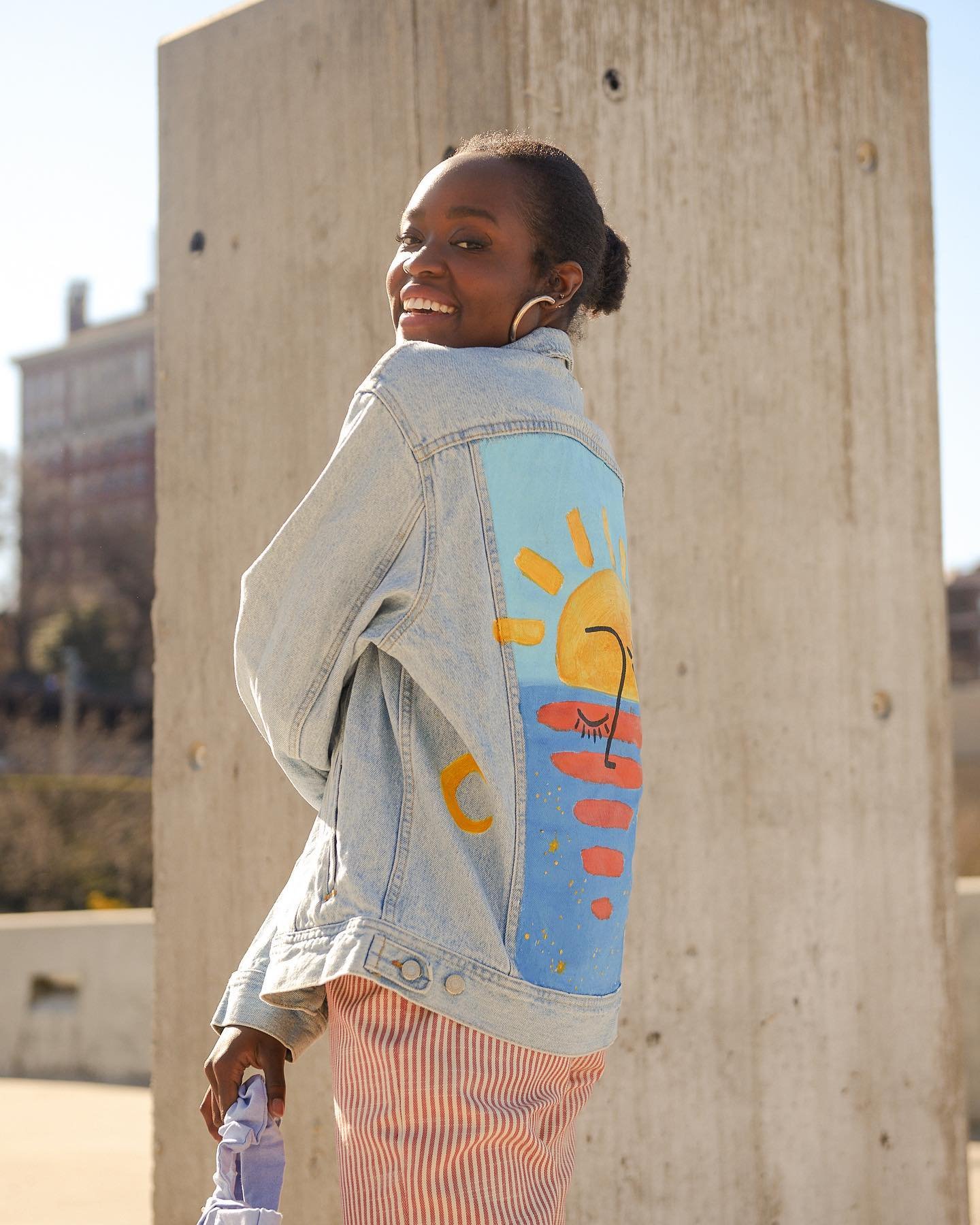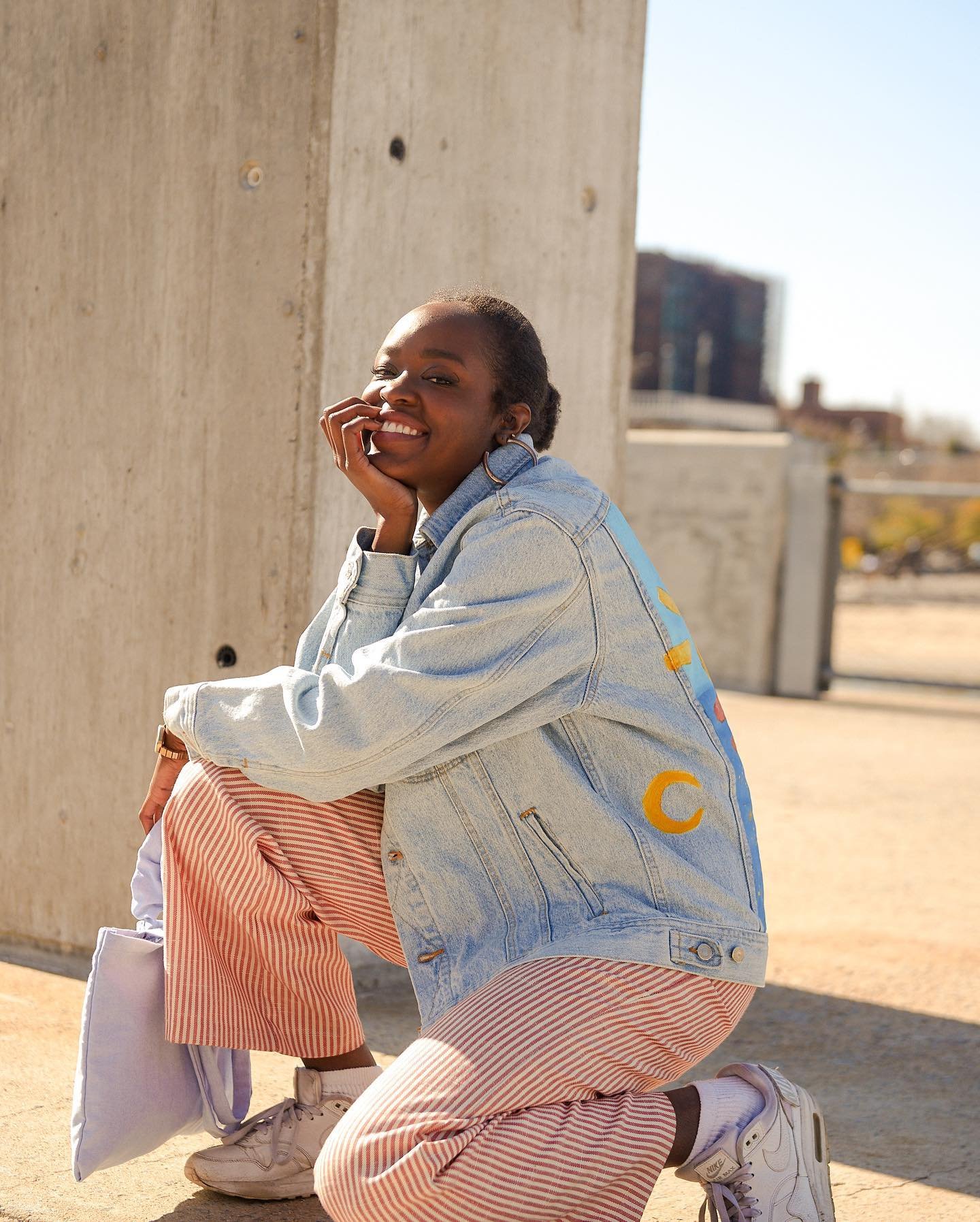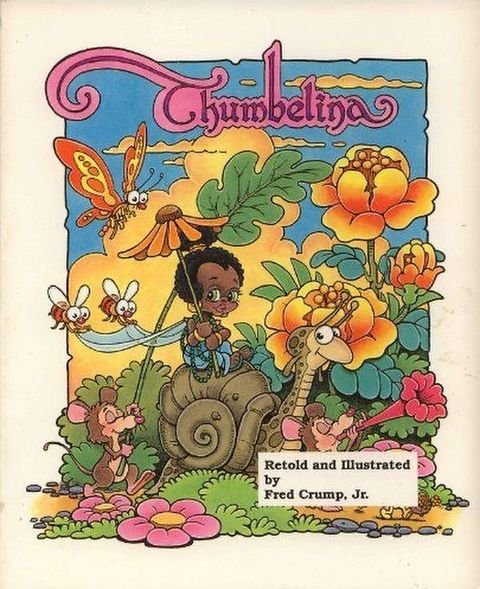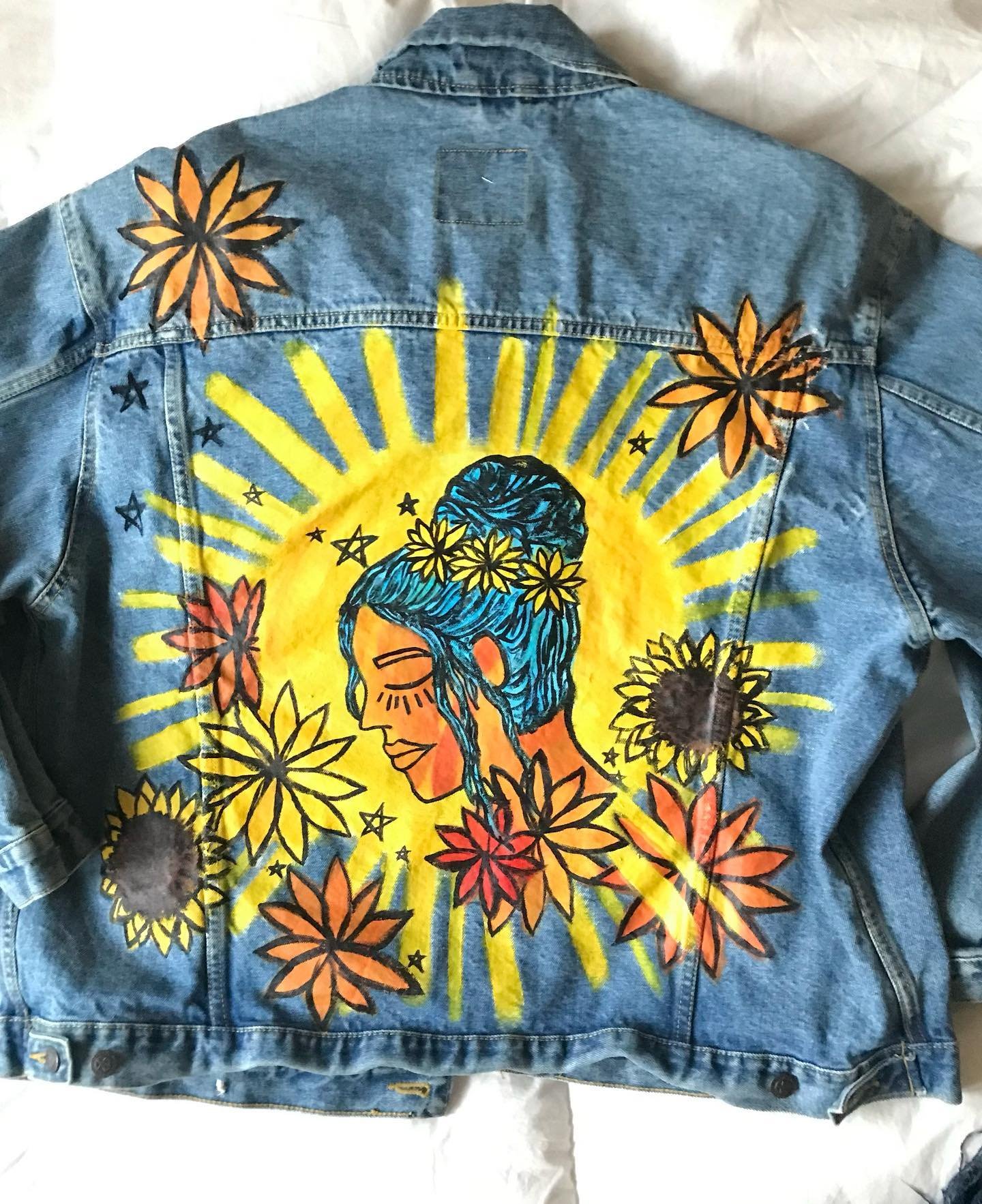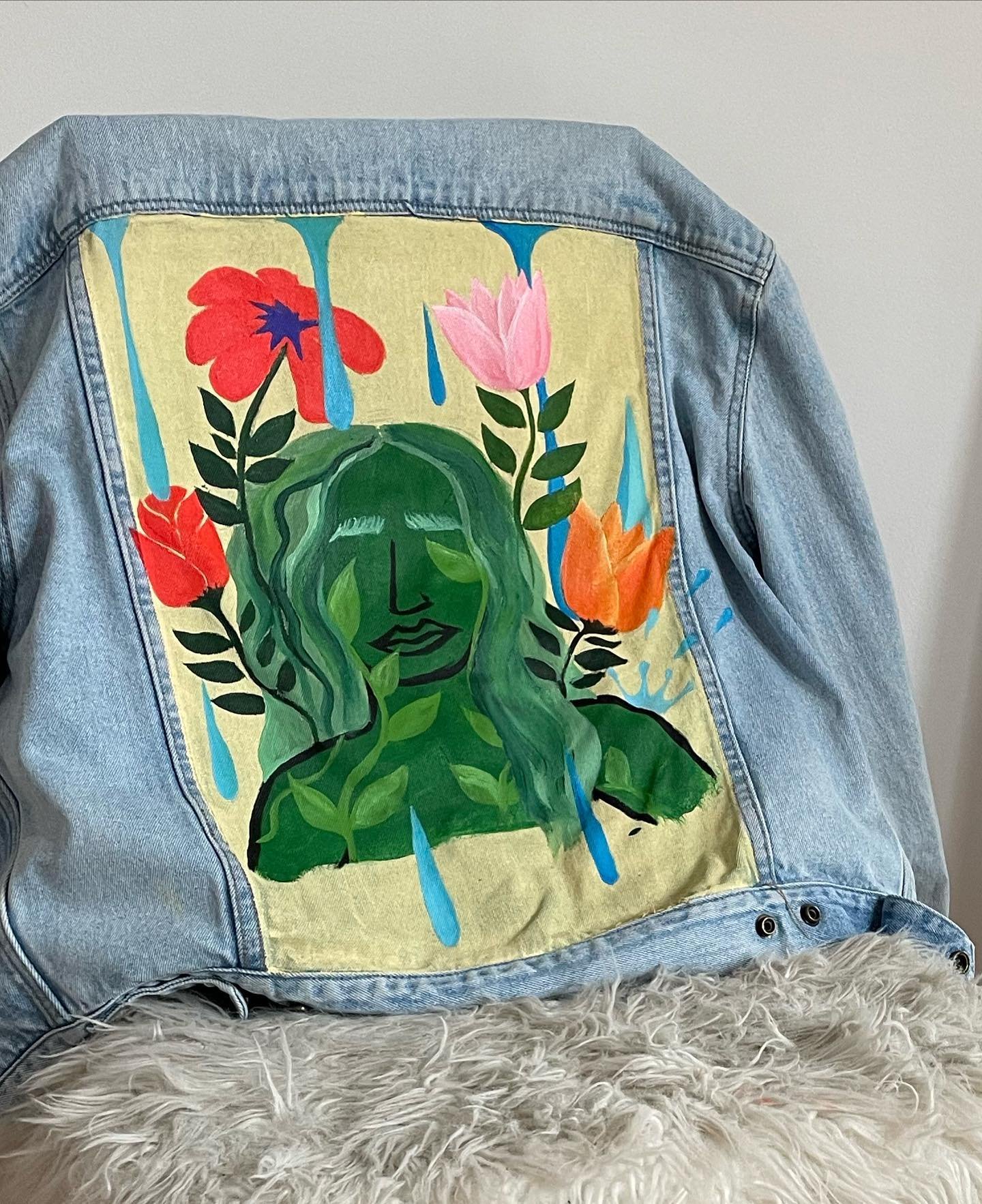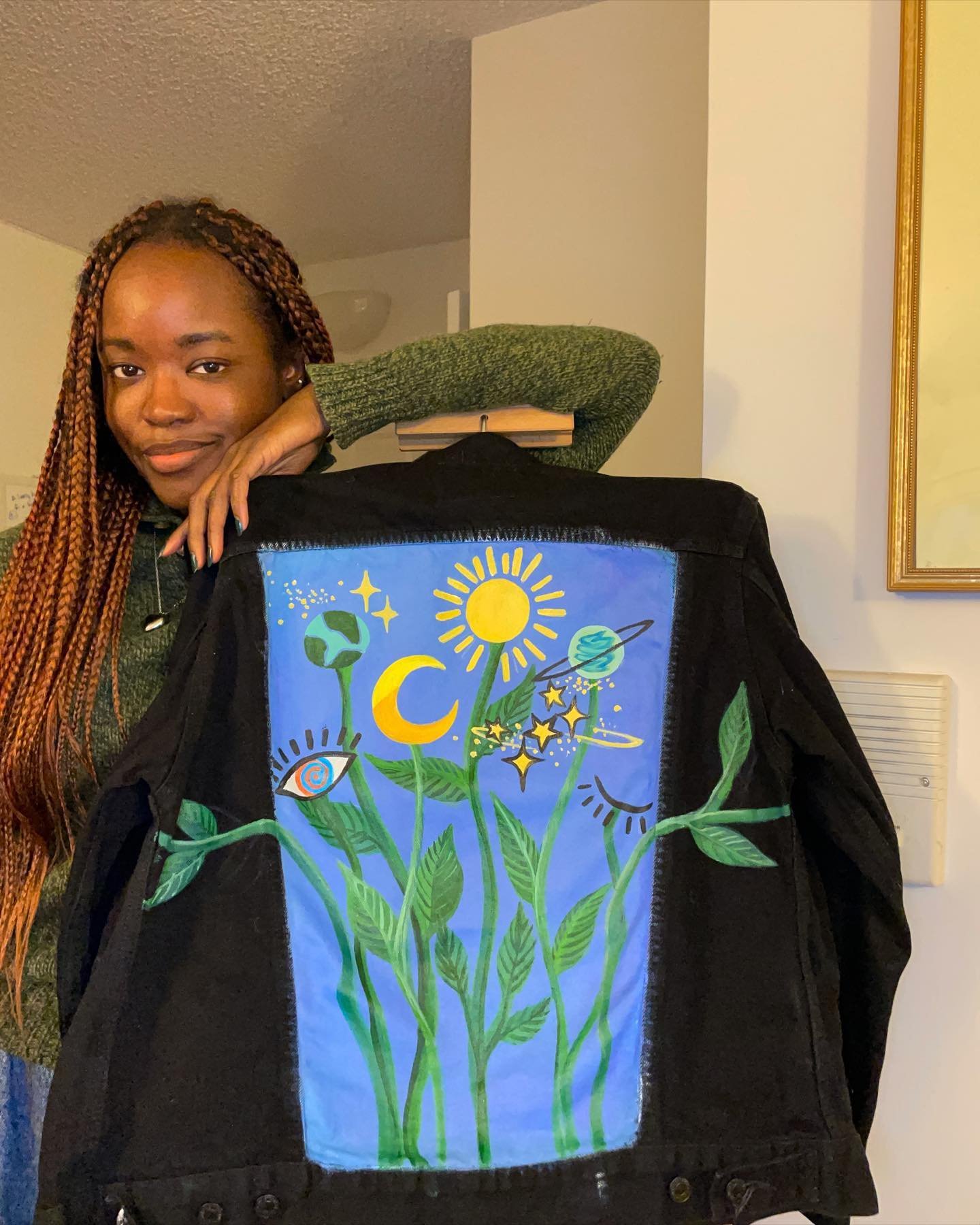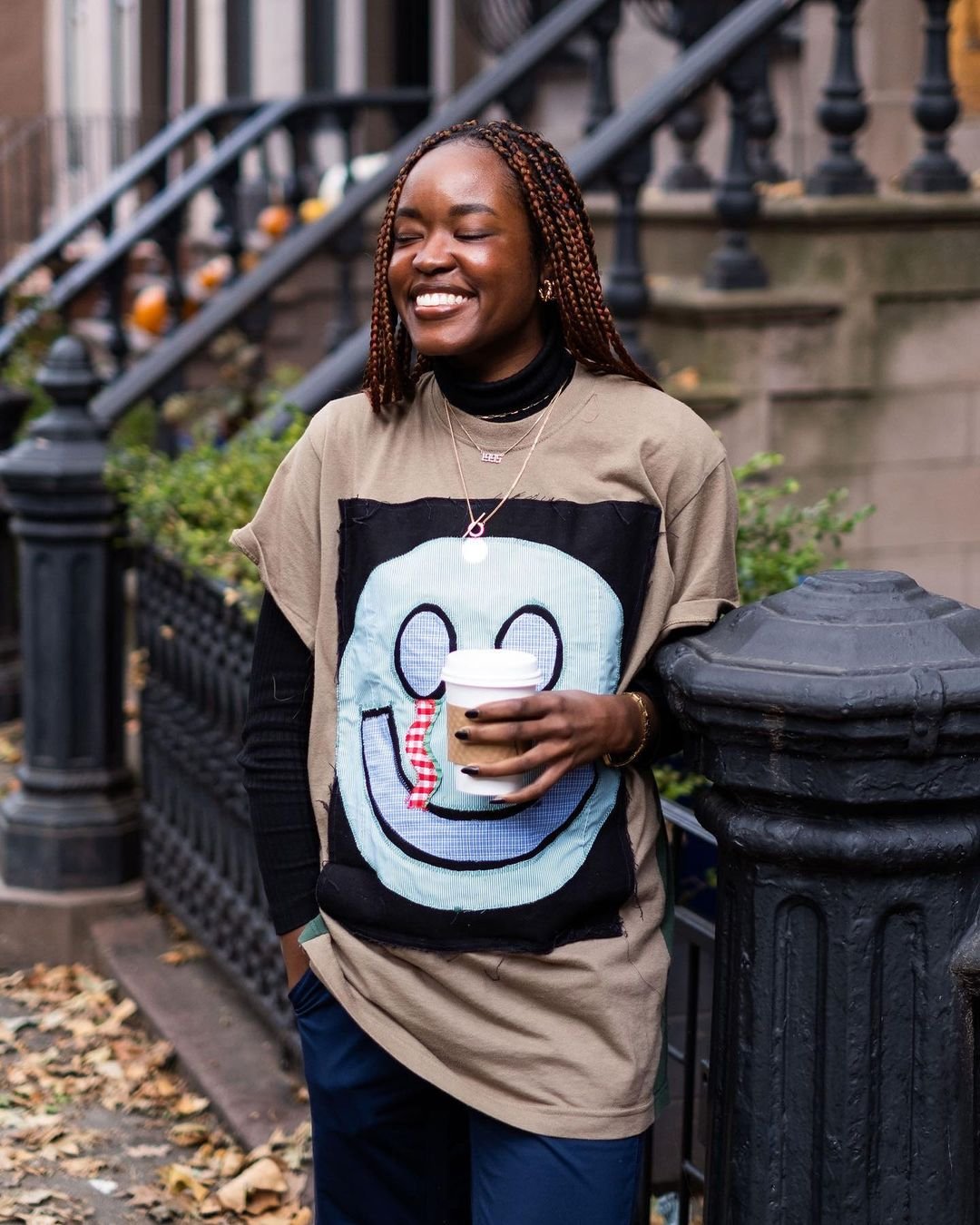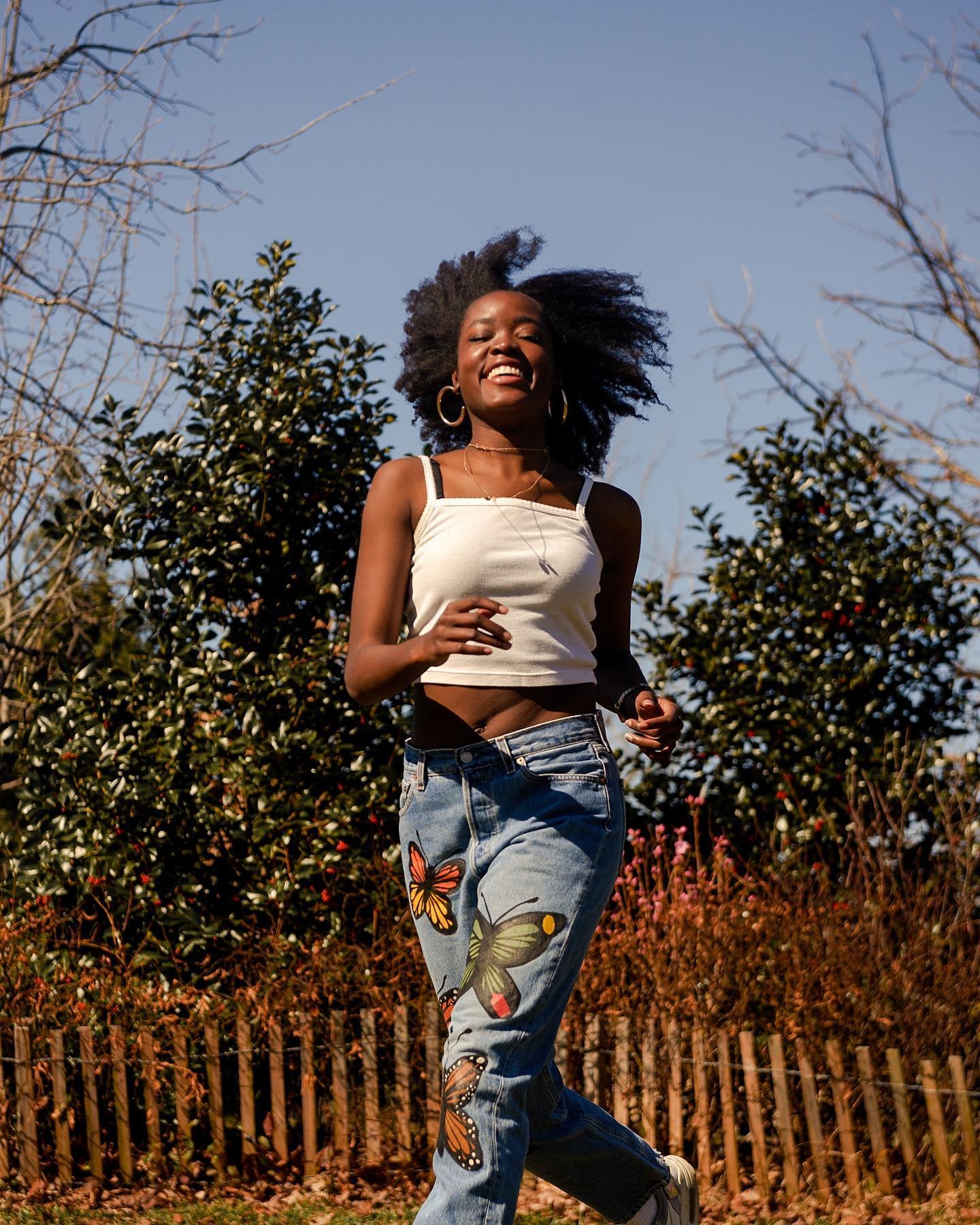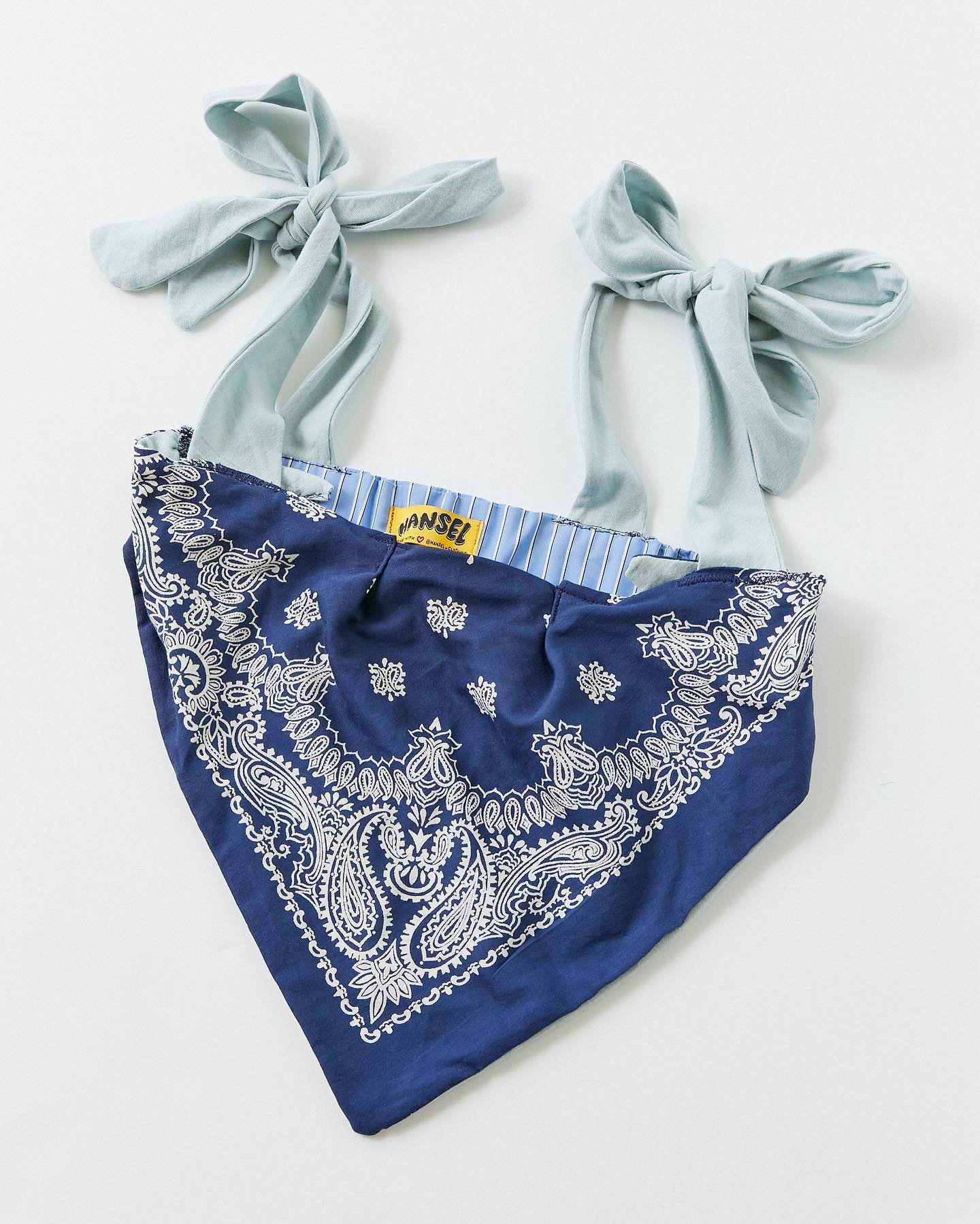Sustainable Baddie of The Week: Mikaela Clark of Hansel Clothing
🌞: Gemini 🌙: Aries ⬆: Libra
Many of us likely have fond memories associated with fairytales like the classic Hansel and Gretel. In the story written by the Grimm brothers, two children are left in the woods to fend for themselves during a period of famine. It is during this period of danger and fear that Hansel has the idea to sacrifice his and his sister's small amount of bread and use it as a tool for guiding them back home. As the children are led away from their home, he drops small crumbs along the trail, so as they get further and further the crumbs will lead them back.
Hansel’s resourcefulness aptly reflects the attitude and inspiration for our baddie of the week Mikaela Clark's brand, Hansel Clothing. Although the name did not click until years into its existence, Mikaela hopes that wearing Hansel Clothing helps everyone find their own trail back home, whatever that might mean to them.
The brand is rooted in her familial tradition of resourcefulness, a personal history of self-expression, and a desire to reconnect with the playful energy of her own youth. For Mikaela, Hansel Clothing is all about reconnecting to the storybook-loving child inside each of us.
The origins of Hansel began in 2017 when Mikaela was still in college and coping with some upheaval in her life. Forced to find a new avenue for creative expression, Mikaela began hand-painting custom denim jackets. She started small, making around 24 custom jackets in her first three months. About a year later, she began using the name Hansel to brand her work and create a unique unified vision for her pieces. In 2020, Mikaela and Hansel took on a collaboration with Urban Renewal. Later that year, Hansel was picked up by Urban Renewal for a second collaboration. As Mikaela’s personal life has gone through changes, Hansel has followed alongside her in a natural progression.
As a Gemini Sun, Aries Moon, and Libra rising, Mikaela’s work and creative life have always been intertwined. Currently, Mikaela works as a creative project manager, where she can express her air and fire sign energy in a supportive space. She is originally from Missouri, but currently lives and works in New York. Although she has lived on the East Coast for years, her connection to her midwestern identity has grown stronger over time. “I think when you first move to New York, you want to be like, ‘Yeah, I'm like, you guys, I'm cool.’ No, I'm just midwestern…I'm just corn-fed, like from-the-center-of-the-country energy.” Despite having moved throughout her childhood to cities like Houston and Atlanta, it is really Missouri that she calls home. She has familial roots in Missouri and her network of creatives, artists, and writers run deep there. It seems fitting that it was in Missouri where Mikaela began her own creative journey in fashion. It was in Missouri where she first learned to sew and make her own clothes.
Instructed by her mother, who was herself talented at sewing, Mikaela and her sisters learned the basics of making their own clothing. They spent their first summer in Missouri taking sewing classes at none other than the Midwest crafting institution, Joann Fabrics. There, Mikaela learned the foundations of sewing technique, but she learned the most important lessons from her mom.
“All that I've retained only came from her, whatever I learned at Joann’s I can't even remember. I remember her telling me how to make my own patterns when I would go shopping with her, she'd be like, ‘Don't buy that tank top. You can make that at home.’”
Mikaela’s mother taught her that sewing and making her own clothes was a practice of resourcefulness. But her love for fashion came later, as a practice for social survival.
As a kid, Mikaela started re-creating the styles and clothes she saw on TV in those early 2000s days. The signature Y2K styles and pieces dipped in glitz and glamour were some of her favorites to re-design herself. She started to dream up a world in fashion. “I would draw these sketches and these fake collections in my journals during church.” As summer ended and school began, fashion became a vehicle to understand her own identity in a newly homogenous environment. Where Mikaela grew up in Missouri, she was one of the only Black girls in her class, and her classmates were not shy to highlight that she stood out.
“People started paying attention to me and pointing things out.” This unfamiliar and unasked-for attention left ten-year-old Mikaela with the decision: “if I'm going to stick out anyway, I'm going to make it into something.”
Once the realization of being different than her classmates settled, she sought ways to find some control. “I wanted to make sure if I look different than everyone, then I know why they were staring at me.”
This childhood memory continues to propel Hansel forward. In 2017, Mikaela was on track to get her degree in music when she suddenly lost her voice. As a response to this dramatic shift in the direction of her life, she began painting jackets and making custom pieces. “I think it took me a long time to take Hansel seriously, because for me it was almost like the consolation prize for this other thing that mattered more.” Over time, as Hansel grew and she was making more pieces, she started to reframe Hansel as a project with potential. “It took me a long time to realize everything I was doing with this brand was created to bring people joy in their everyday moments and created for those kids that were like me, that use their clothes as their armor and to self-express.” In 2020, when Mikaela was offered a chance to create a small capsule collection with Urban Renewal, she was hesitant. At first she thought, “‘I'm fine, you know? I like my small thing.’ But it ended up working out great. Choosing to go from just making these custom jackets for friends through word of mouth to creating Hansel Clothing was really just deciding to honor that inner kid, to take my passion seriously.” She’s grateful to have taken the chance when she did, because it was around the same time of that collaboration that Man Repeller, Mikaela’s employer at the time, shuttered. Again, Hansel was there for her as she faced another life transition.
Today, Mikaela is committed to keeping the brand rooted in its origins of self-expression and resourcefulness. When she started making her own clothes, upcycling and thrifting were not yet normalized in the way that they are now. “Back then, I was getting made fun of because I was taking Walmart skirts and cutting them up.” But as Mikaela maintained her commitment to re-working pieces, the fashion world followed. Now, inspired by the resourcefulness that characterized Mikaela’s childhood and motivated by a universal need to take their environmental impact more seriously, sustainability has become even more central to the brand. Mikaela sources all her fabric from thrift stores, uses compostable mailers, and tries to minimize waste in the production process. “I'll go to the thrift stores and kind of see where is the excess, which is why I do a lot with button-down shirts. I kind of look and match what I'm inspired by with where the need is. Then ask myself, how can we make new things with button-down shirts that people won't throw them away?”
As Hansel continues to grow, Mikaela is developing new visions for the brand. “I would love one day to have some help in the seamstress world. I'm reaching my own technical limits and there are certain things I want to keep learning, but I also want to make sure that I'm never pretending like anyone can do anything themselves.” Mikaela also sees a future where Hansel is more size-inclusive, and where she can focus on the painting and color mixing with sustained intentionality. “I want to make clothes that make people feel comfortable, like themselves, [and] that they just want to keep because they are tried and true.” But, she’s facing big questions as she looks towards the growth of the brand.
Mikaela is contemplating questions of scale and capital that many of us in the sustainable fashion world are asking ourselves. As she considers the cost of becoming an independent venture, she’s weighing how to grow enough in size and sustain enough capital to support Hansel’s longevity.
At the same time, the core objective in our corner of the fashion industry is to reduce how much we produce and consume overall. But Mikaela feels that as long as thrift stores are full, there will be upcycling magic for Hansel to work.
She adds that finding the right partners will determine Hansel’s trajectory. “My vision is really going to have to include having partners who help me source and help me stick to my commitments in sourcing. And [who] help me create, in a really mindful way, for the purpose of making beauty out of what people are throwing away.”
Even as Mikaela approaches new transitions and periods of growth, the brand’s narrative has stayed consistent. “Your inner kid is everything that Hansel is about. I think I am trying to connect with my inner kid by making these clothes. That is what fashion has always been like for me. Feeling like your true self. My mom passed away a few years ago. She taught me all of this. It is so beautiful to watch it grow and to watch other[...]people choose my clothes as part of their armor.” We know that Hansel, in its colorful and playful glory, will continue to connect sustainable baddies everywhere to their inner children.

